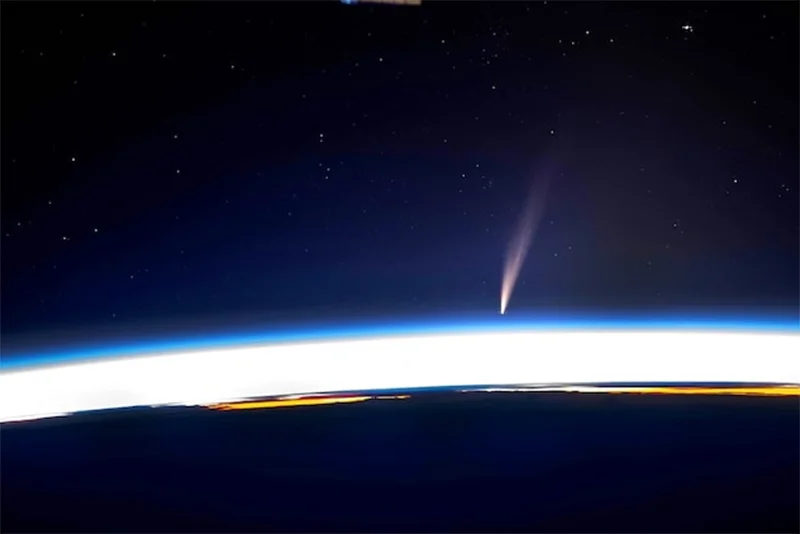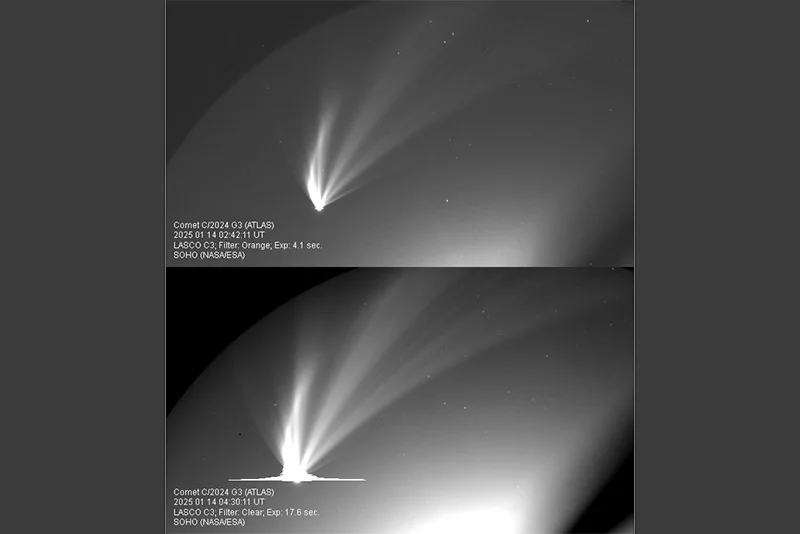
Pictures: Comet blazing now in sky will be seen after 160K years
Sky gazers Monday January 13, 2024 had a chance to see Comet C/2024 (ATLAS) which would appear only after 160,000 years later

[Clear skies and a good horizon view are essential to see the comet. (Photo: X/@PepeChambo)]
Sky gazers Monday January 13, 2024 had a chance to see Comet C/2024 (ATLAS) which would appear only after 160,000 years later.
American space agency NASA confirmed C/2024 (ATLAS) appeared over the sky Monday, and also shared some mesmerising images.
But, don't worry if you missed this once in a life astral vista last night. The comet will grace the sky for the next couple of days.

[Comet C/2024 G3 (ATLAS) seen from the Space Station. (Photo: NASA)]
“Over the weekend, comet C/2024 (ATLAS) made a grand appearance in images from the ESA/NASA Solar and Heliospheric Observatory (SOHO).
“The comet will continue to blaze through SOHO’s view for the next couple of days”, NASA said.
Visible by naked eye
For the space lovers wishing to catch a glimpse of the extraordinary cosmic visitor, clear skies and a good view of the horizon will be essential.
NASA said the future brightness of a comet is "notoriously hard" to predict, but that Comet C/2024 G3 (Atlas) could remain bright enough to be seen by the naked eye.

"The best viewing opportunities will occur shortly after sunset on January 14 as well", NASA said.
While the exact locations for possible visibility are unknown, experts believe the comet, which could shine as bright as Venus, may be best observed from the southern hemisphere, according to BBC.
"Sun skirting comet"
Dr Shyam Balaji, researcher in astroparticle physics and cosmology at King's College London, said, "The current orbital calculations indicate it will pass about 8.3 million miles from the Sun, which classifies it as a "sun-skirting" comet."
Comet C/2024 G3 ATLAS captured from in International Space Station
— Dreams N Science (@dreamsNscience) January 12, 2025
This is a long-period, sungrazing comet, which will not come back before 135,000 years (date depends on the way the comet will outgas, which affects its trajectory)
based Donald Pettit picture (American… pic.twitter.com/mPmFKMDMZk
The university described the comet as a once-in-160,000-years event.
Dr Balaji said opportunities to spot the comet may occur "in the days around perihelion, depending on local conditions and the comet's behaviour".
"As with all comets, its visibility and brightness can be unpredictable," he added.
Follow ummid.com WhatsApp Channel for all the latest updates.
Select Language To Read in Urdu, Hindi, Marathi or Arabic.
